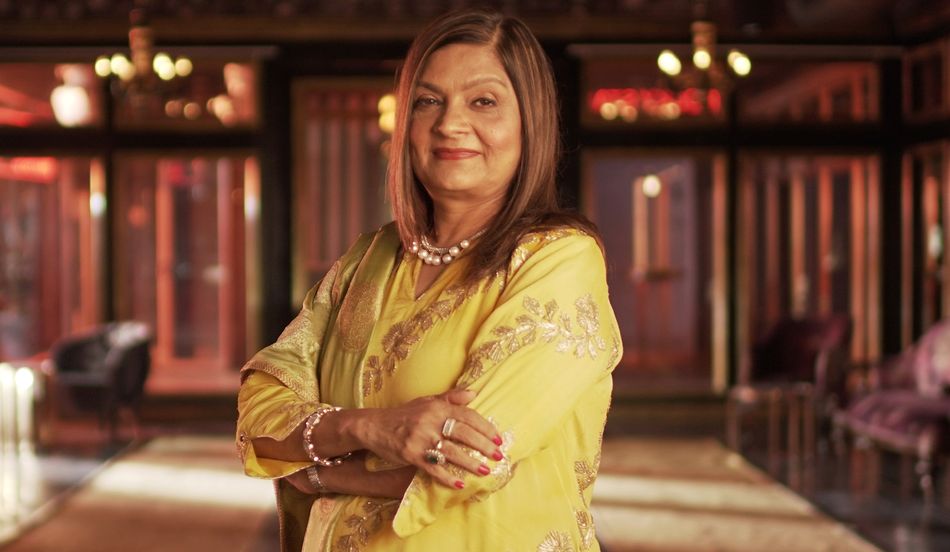In the two weeks or four years since Indian Matchmaking debuted on Netflix (I just checked: It’s 10 days), I have watched my fellow South Asians do what we do best: Rip it apart.
The Netflix reality show follows Mumbai matchmaker Sima Taparia as she takes on various clients looking to settle down. It has been called casteist, colorist, regressive — all the adjectives my generation of allegedly progressive Desis use to describe things we criticize or reject about our culture. It is being maligned, in short, for doing exactly what it meant to: Presenting a multifaceted depiction of Indians around the world through the lens of our collective obsession: Marriage.
Let’s start with one note: Matchmaking is not the same as arranged marriage. The most irksome critiques I’ve seen of Indian Matchmaking say that it glorifies an ancient practice which sold child brides to wealthy older men or trapped people in toxic marriages. Taparia’s role is nothing of the sort; paradoxically, she functions as a human dating app, taking each client’s characteristics and desired traits in a partner and then looking for someone who might fit. No one is under any obligation to marry or even keep dating their matches — in fact, none of them ultimately did.
What makes this so interesting is that the characters are not characters at all, but real people, flawed and romantic and three-dimensional. Just as racism has layers and levels, so too do casteism and colorism. They don’t go away just because the younger generation wants them to, and they infect and ingrain themselves in us in uncomfortable ways that demand interrogation. I am far less incensed that Richa wants a “fair” partner than I am when my supposedly woke friends hide from the sun on vacation so they won’t get darker. Over the years I’ve heard friends express that they want to marry by a certain age.
A big part of the upset within my own community seems to stem from the fact that non-Indians are consuming this show as entertainment, just as many binged Tiger King in the same year. That show told the story of a troubled and insular community which felt like escapism for many viewers, but rang too true to some. If someone is getting their Indian cultural education only from media, it’s bound to be skewed, but it shouldn’t be any one show’s job to take on that labor or sanitize reality. Any time the Indian community’s inner turmoil faces exposure, we clamor to cover it up. Yes, we have problems, bigotry, and baggage — but god forbid the world see it before we’ve set our own house in order.

I first saw that hypocrisy come to light with Slumdog Millionaire, a film I firmly defend to this day. One of the most common critiques I hear is that it depicts poverty — not even how it depicts poverty, just that it does at all. Why not tell a story of rich or middle class Indians? (Indian popular cinema has this more than covered, by the way.) But I’ve been to India over 20 times, and I’m still struck by the sight of sprawling slums next to luxury high rises. The movie didn’t perpetuate a stereotype, it exposed an ugly truth, and then it was up to us to right it.
To the same end, Indian Matchmaking is not inventing something damaging, but sharing it with the world via Netflix. Public shaming has kicked the Indian community into gear on more than one occasion. In 2012, a brutal gang rape and murder made international headlines and had India clamoring to answer for how this could have happened, as well as exposing dangerous misogyny in everyone from those convicted to their lawyers and other men in power. As recently as June, it took the Black Lives Matter movement and worldwide protests for many South Asians to contemplate their own anti-Blackness, and for the product known as Fair & Lovely to rebrand. If any part of Indian Matchmaking sits poorly with viewers, it’s not enough for us to tweet irritation or dismiss the whole show. We have to address where its unfavorable attitudes pervade in our own lives and start the healing there.
(this spotlights a representation issue: nobody watches low grade american reality TV to learn about the u.s. but when an indian equivalent show comes out, it has the burden of repping a whole country when it really is just low calorie programming.) https://t.co/91Kf1ieKCy
— Sopan Deb (@SopanDeb) July 19, 2020
The flaws of Indian Matchmaking don’t have to take away from its entertainment value. This chunk of 2020 is objectively the worst, but I marvel that we’ve had no less than three new TV shows about Indians or Indian Americans in time: This one, Never Have I Ever, and Family Karma. I hold the former as Mindy Kaling’s best work and one of Netflix’s finest originals; I looked forward to the melodrama of Family Karma every week with more gusto than the last three seasons of Game of Thrones.
I love having so many shows about my people now that we can pick and choose what we like and compare so many varying stories between series. Indian Matchmaking is part of a larger TV moment that brings the Indian community closer to the world at large. We have our own trash and our own treasure, our subgenres, our heroes, our villains. We have racist relatives and dramatic friends, and we have a lot of work to do. We’re just like you, and we’re also trying to do better.
Indian Matchmaking is now streaming on Netflix.
